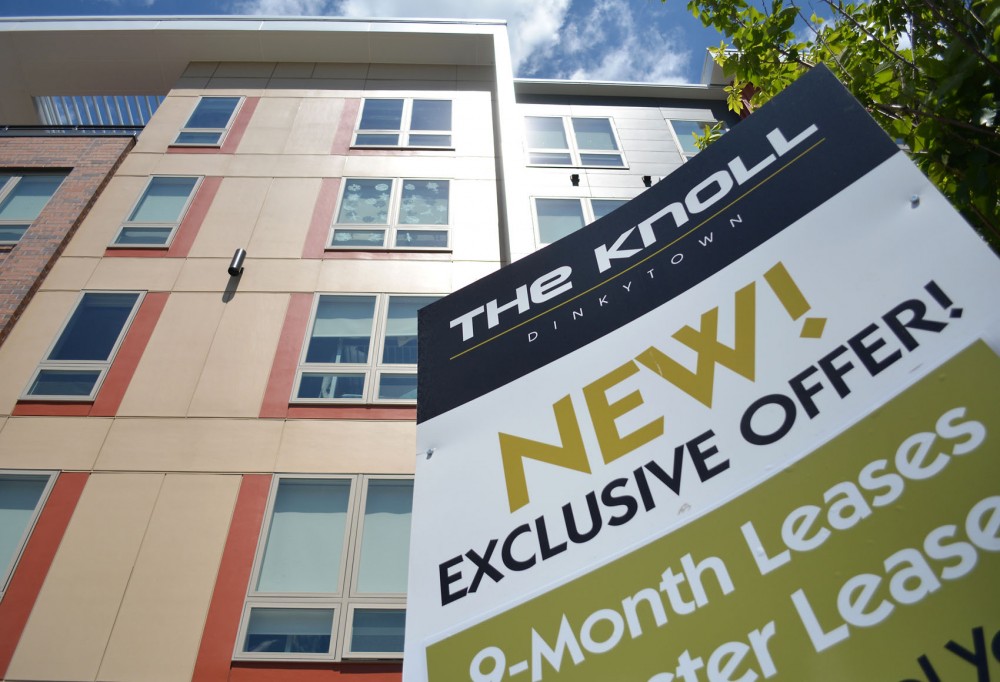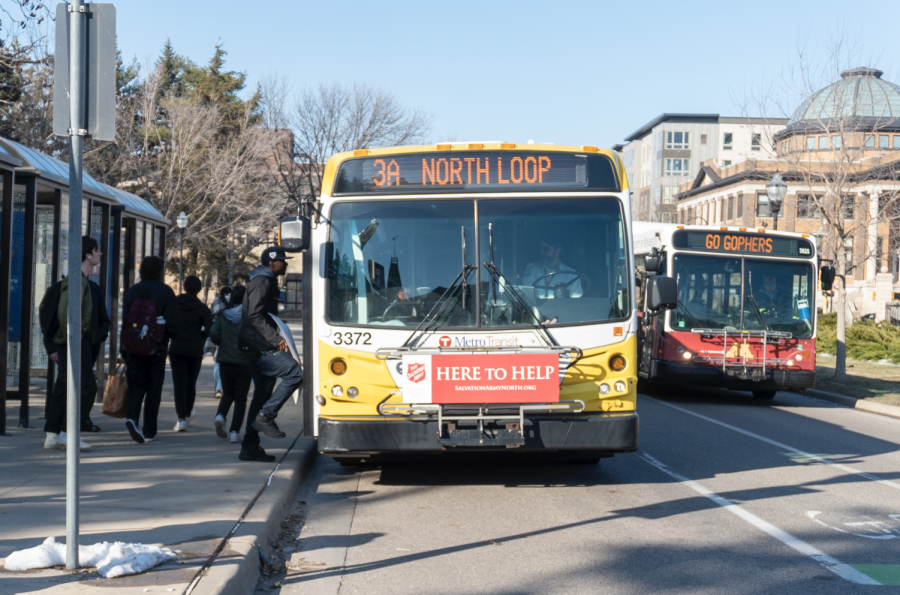Apartment buildings now dominate the University of MinnesotaâÄôs skyline in places where, a decade ago, houses and businesses dotted the landscape. Despite the recent surge in housing projects around the University campus and renewed predictions that the bubble must burst soon, developers are still proposing new apartment complexes intended for University students. At a Southeast Como neighborhood meeting last month, representatives from Project for Pride in Living âÄî a Minneapolis nonprofit that provides low-income housing âÄî told community members that a Californian developer was interested in turning the Bunge grain elevator site into student housing. As new buildings continue to pop up, mixed views on the years-long trend are surfacing. Experts are uncertain whether the housing boom will last, and residentsâÄô opinions remain conflicted. Although Project for Pride in Living has been in talks with a developer, Vice President of Programs, Fundraising and Communications Julie Brekke said there are not yet any purchase agreements for the grain elevator and the surrounding land. This type of interest is hardly new for the University area. Almost every year since 2009, at least one new apartment complex has opened near the University, and two more âÄî the Radius and WaHu âÄî will open in time for fall semester. In the Marcy-Holmes neighborhood alone, the number of housing units has doubled over the past 10 years, said Haila Maze, MinneapolisâÄô principal city planner. Despite the rapid increase of University-area housing options, the eastern sector of Minneapolis âÄî which includes neighborhoods like Marcy-Holmes, Southeast Como and Prospect Park âÄî has a housing vacancy rate of only 1.8 percent, according to a Minneapolis quarterly trend report. That rate is similar to those of most other city regions, a fact Maze said signals a tight housing market across the city, even in the face of so many developments near the University. Determining the vacancy rates of individual complexes can be difficult, Maze said, because it isnâÄôt in developersâÄô best interests to disclose that information. Still, offers like gift cards or a rent-free month of residence can be indicators that a building is in need of tenants. âÄúWhen specials are offered, itâÄôs a strong indicator that they arenâÄôt filling,âÄù Maze said. âÄúIt used to be that a building would be completely pre-leased before building was complete, but thatâÄôs not the case anymore.âÄù Despite attractive offers like free cash prizes and months of rent, apartment prices most likely wonâÄôt decrease, said Mary Bujold, president of real estate consulting company Maxfield Research Inc. Management for apartment complexes is usually expected to generate a certain cash flow for investors, Maze said, a task that sometimes keeps rent from falling. âÄúItâÄôs not a good idea to drop effective rents,âÄù Bujold said, âÄúbecause youâÄôll get caught in a cycle of having to increase those rents later on.âÄù Building student housing near a flagship university isnâÄôt unique to Minneapolis, Bujold said. Instead, itâÄôs been a common theme over the past decade for college campuses nationwide, partly due to aging dorms and climbing enrollment. âÄúUniversities were suddenly faced with a situation where they have growing enrollments, may be landlocked and donâÄôt have enough additional resources to devote to housing,âÄù Bujold said. The University benefited from new apartment developments 10 years ago, she said, because they allowed administrators to avoid having to invest more money in campus housing. At the same time, early developers didnâÄôt face much risk because there werenâÄôt a lot of competitors in the area. The Marshall apartment complex, which opened last fall, is owned and managed by EdR, a Tennessee-based real estate investment trust that owns or manages 52 properties on college campuses nationwide. The company considers the housing market, school enrollment and adjacency to campus when deciding on where to develop, said Susan Jennings, vice president of corporate communications and marketing. Jennings said it was a âÄúno-brainerâÄù to develop near the University because of projected enrollment increases. Right now, the housing market around the University is stable, Bujold said, but she expects a decline in undergraduate-specific housing could soon crop up and lead to a shift in focus toward the housing needs of graduate students and University staff members. Though city officials monitor market saturation closely, she said itâÄôs not up to them to decide if a project is an economic gain or loss to a developer. âÄúFive years ago, people were saying, âÄòThis has got to be the last project,âÄô but that was five years ago, and the projects keep coming,âÄù Maze said. âÄúLogically, there will be an end.âÄù
A divided community.
Some Southeast Como residents are hoping their neighborhood doesnâÄôt become a hot spot for student apartment complexes. âÄúMore housing was needed in some cases, but then they just went way overboard,âÄù said Ricardo McCurley, executive director of the Southeast Como Improvement Association. âÄúNow, everyoneâÄôs just left wondering, âÄòWhatâÄôs the saturation of the market?âÄôâÄù Other area residents think the incoming housing could benefit surrounding businesses. Five-year Marcy-Holmes resident Christi Lee said she likes to see new apartment complexes because students choosing to live in those spaces open up traditional houses for more permanent incoming residents, like young families. âÄúIn the last year, I really feel like I have started to see some families in the neighborhood that I wasnâÄôt used to seeing,âÄù she said. Lee said she thinks peopleâÄôs proximity to student apartment buildings affects their views on new construction, adding that her opinion might change when the Radius opens this fall near her home. The neighborhoodâÄôs greatest gain from new housing is added retail spaces that come with the apartments, Lee said. Target Express below the Marshall, for example, brought food and groceries to the area that were unavailable before, she said. Part of the reason college campuses are so attractive to developers is the mix of commercial and residential spaces in urban settings that they offer, Center for Urban and Regional Affairs director Ed Goetz said. âÄúWeâÄôve grown quite a bit, and the demand for housing continues to be significant,âÄù Goetz said, adding that the market could change over time as the demand for housing shifts in the metro area.

















